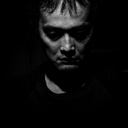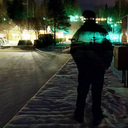1 Like
Kafka's text "A Hunger Artist" joins a long tradition of artist's plays, novellas and short stories, revolving around questions of character, nature and social position of the artist. Kafka tells the story of a starving the scene prescribed artist who comes into conflict with his art and society. The anthology "A Hunger Artist" is Kafka's last published work and is enjoying himself, although published in 1925, yet perpetual relevance. This gave him occasion to a young ensemble on stage to honor to the artist to approach problems. The staging is and examines questions such as: What is art to the people? How to become an artist? How is art? What can art? Is art independent? And who defines art? The focus is not on the answers to these questions, but rather its concreteness, its dispersion but not the game with its many facets. On different levels aesthetic points of contact between art, artists and society are addressed and to identify and emotional participation, sometimes just invited to search. The production sees itself as a rich visual search for mechanisms of cultural processes, as an illustration of artistic potential, as a caricature of social processes and hopes to provide inspiration for further thoughts can be. Ensemble: Manuel Anghel, Immanuel Bartz, Sebastian Bolitz, Maximilian Carrara, René Condné, Maria Gohlke, Johannes Ben Jurca, Caro Kuchinke, Roman Kuskowski, Manuel Reinhard, Swaantje Siebke, Katharina Soergel, Melanie Stirner Marie Zieger und Alexander Zock





Overview and HistoryFrankfurt am Main is the most international city in Germany and the largest financial center of Europe. Its long history as a trading center translates in modern times to mean that almost one third of the people in Frankfurt do not have German passports!The city's roots go back to at least 3000 BC. Its location on the Main River in central Europe allowed and encouraged commerce from the very beginning. The root of the name comes from the German "furt" meaning a ford at a shallow river crossing, and "Frank" for a certain Germanic tribe whose name you can probably guess on the first try.Roman ruins date to the 1st century and the district called "Bonames" reflects the early Roman influence on the city.Frankfurt was an important city during the reign of the Holy Roman Empire. Charlemagne presided over his imperial assembly here, and from Emperor Maximillian II to Emperor Franz II, coronations were held in St. Bartholomew's cathedral.The Frankfurt Fair (Messe) received its imperial charter in the year 1240, which gave permission to hold their annual trade fair. The Stock Exchange began trading in 1585 and, as Bonn was chosen as the political center, they devoted all their energy to financial interactions.The Thirty Years' War came along concurrently with the Bubonic Plague to throw a monkey wrench into Frankfurt's percolating progress; the Napoleonic Wars followed and saw occupation by French troops.Nevertheless Frankfurt remained a free city and was incorporated into the German Confederation as of 1866 AD. It was the seat of the short lived Frankfurt Parliament before losing its independence after the Austro-Prussian War. After WWI it was occupied again by the French, and during during WWII it suffered severe bombing that destroyed the entire medieval historic district.After the end of WWII Frankfurt missed being named the capital of the Federal Republic of Germany by only a few votes. The city has rebuilt its financial strength and now is home to the European Central Bank as well as Europe's tallest office building (the Commerzbank Tower).Getting ThereThe Frankfurt airport is the busiest cargo airport in Europe and, counting by the number of international connections, the busiest in the world!To smooth out the trip between the real world and the world inside the airport, Frankfurt has envisioned a seamless network uniting automobile, train, bus and even bicycle. You can get both long-distance and local trains at the two airport train stations. Trip time to the city center is about fifteen minutes on the local trains. By taxi the ride to Frankfurt center will cost about 25 Euro.TransportationPublic transportation in Frankfurt consists of seven underground lines (U-bahn), nine tram lines (Strassenbahn) and over forty bus lines. In addition to these there are extensive city trains (S-bahn) as well as night buses which operate between one and five AM. A one-day pass for the system costs around five Euros.There's one kind of "crazy driving" city where nobody follows any rules except for "honk your horn a lot". Driving in Frankfurt is the other kind of crazy, where you find nothing but one-way streets and orderly traffic jams, in other words fudging the rules DOES NOT HAPPEN. Taxis or limo's might be a good idea rather than renting a car...Rent a bike for ten Euro per day and watch the city open up around you!People and CulturePeople in Frankfurt combine opposites in a charming way here, where you can find ancient cider pubs as well as the stock exchange and a skyline full of steel and glass.In the modern direction, Frankfurt claims the originators of trance music! DJ's like Sven Vath, Jam and Spoon and Oliver Lieb started playing a harder version of acid house music here at club Omen, back in the early 90's, and launched what would become a global music force.The city, being so multicultural, also offers every type of restaurant from around the world so don't be afraid to tramp off the beaten path. Grune Sobe is an herb sauce native to Frankfurt which you should try while you are here. To find it, dig around the old Frankfurt in neighborhoods such as Seckbach or Bergen-Enkheim. The best part for english speakers, of course, is that you get to say "swineflesh" when you're ordering a pork dish.One note: supermarkets are uniformly closed on sundays. Good for the restaurants, bad for the home chefs! The airport has the only twenty-four hour supermarket in the city, so don't put off your shopping until the last minute or you will be left hunting for wild greens in the forest.Things to do, RecommendationsThe highlights of the Frankfurt cultural scene will always include events and installations along the "Museumsufer", a string of eleven major museums along both sides of the Main. Here are some recommendations of other things:The Goethe House, museum of Frankfurt's native son Goethe, who wrote the spine-chilling epic tale of Dr. Faustus.You can find English language productions at the English Theater in Kaiserstraße.For movie hounds, tromp on over to UFA Turm-Palast, a cinema showing English, American & Turkish films in their original languages.Further out from the city center you can explore Kronberg/Königstein - two nice little towns in the Taunus ideal for going for a walk.In Hessenpark, Neu-Anspach you can find an open air museum with plenty of old half-timbered German houses, churches, windmills and a school. In Saalburg, Bad Homburg you can see the remains of a Roman fort and museum.And don't forget to go to the Commerzbank Tower and go up to the top to get a view of the city -- if you're allowed; I haven't tried it.Text by Steve Smith.